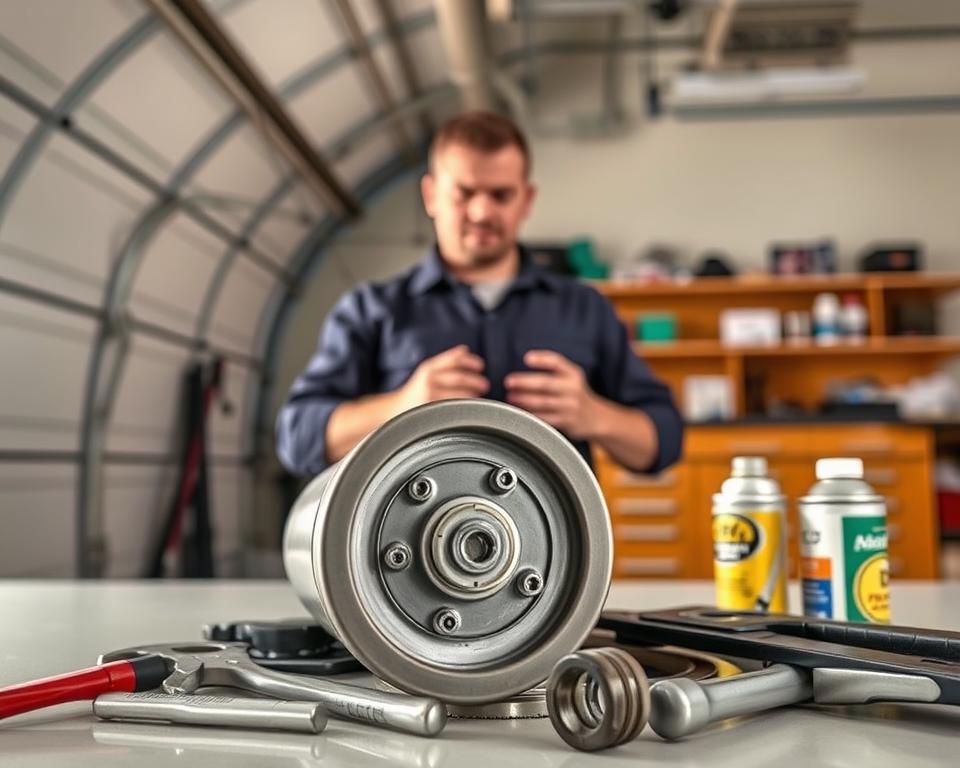Unleash Online Success with a Leading NYC SEO Company
Interesting fact: three-quarters of visitors hardly ever go beyond the initial page of search outcomes? In this digital age, harnessing search optimisation is indispensable for companies, especially in NYC’s fast-paced landscape. A leading New York SEO company can revolutionize your business, boosting your digital footprint and engaging you with your ideal customers. With expert experts in search engine optimization NYC, like Marketing 1on1, you get tailored approaches to rise in the search engine rankings. This increases organic traffic and improves your sales conversion and growth prospects in a cutthroat market.
Going with NYC SEO services entails partnering with a ally who grasps the regional marketplace, tendencies, and competitive edge essential to distinguish yourself. Poised to elevate your online presence?
- 75% of visitors never browse past the first page of SERPs.
- Engaging an knowledgeable NYC SEO firm boosts your presence.
- Powerful SEO approaches are able to substantially increase organic traffic.
- SEO is indispensable for businesses in competitive marketplaces like New York City.
- Customized New York SEO solutions cater to your specific business needs.
Why Choose an NYC SEO Company for Your Business?
Selecting an SEO company in New York City offers considerable benefits. Given the city’s complex market dynamics, local SEO solutions are essential for companies seeking to engage profoundly with their customers. By customizing approaches to New York’s distinctive market, businesses can distinguish themselves in a contested market.

The Local Advantage of NYC Expertise
SEO professionals in New York provide knowledge that generic agencies could overlook. Their regional expertise enables them to craft strategies that resonate with regional customers. This strategy guarantees firms interact effectively with their market, increasing their exposure in SERPs.
Grasping Regional Market Trends
Keeping up with area shifts is essential to successful SEO initiatives. An SEO agency in New York City is adept at studying these trends, using this information to adjust strategies. This adaptability results in more effective promotions, giving companies an edge over opponents lacking this regional understanding.
Tap into Industry Networks
Local SEO services in NYC often have connections to major media outlets and online networks. These connections unlock marketing channels, increasing brand exposure. Leveraging the networks of SEO experts in New York can significantly improve advertising campaigns, driving more traffic and results.
Key Services Offered by NYC SEO Companies
Optimization firms in NYC deliver a broad spectrum of offerings to enhance your web visibility. They focus on both on-page and off page SEO to increase your site’s visibility and generate traffic. By using technical optimization, they ensure your site satisfies SEO guidelines. Content strategy is crucial to captivating visitors and building brand engagement. Below is a overview at the primary services from a premier SEO firm in New York City.
Combined On-Page and Off-Page Tactics
On page optimization optimizes your website’s elements to enhance relevance and functionality. This includes refining content, improving metadata, and site structure. Off page optimization, on the other hand, establishes your site’s authority through backlink acquisition and social platforms. Both are essential for effective New York SEO services.
Technical SEO Best Practices
Technical optimization makes certain your website performs smoothly and can be indexed by spiders. It involves improving loading speeds, creating a responsive design, and adding structured data. These actions substantially improve UX, a crucial factor for any SEO campaign in New York City.
Content Creation to Boost Engagement
Content marketing is essential for drawing and keeping visitors. SEO agencies in New York City create high-quality, relevant content that resonates with your target market. This approach fosters interaction and develops customer loyalty, making it a integral part of New York SEO services.
How SEO Can Drive Online Traffic
Successful search engine optimization in New York City is crucial to elevating your online presence and bringing more users. By partnering with a seasoned NYC SEO agency, enterprises can see a significant uptick in unpaid traffic. This is a critical element for long-term results. Understanding how SERPs work allows businesses to deploy SEO strategies that yield concrete results.
Boosting Search Engine Visibility
An fine-tuned site has a higher chance of appearing atop on search engine results pages. This involves using relevant search terms, optimizing website architecture, and providing quick load times. When done properly, these actions by a leading NYC SEO firm can make a company more apparent to customers. This increased visibility not only enhances traffic but also enhances brand trust. Users regularly rely on unpaid listings more than paid ads.
Optimizing Organic Search for Better Leads
Develop content that targets your ideal customers. By producing educational and compelling content, firms can attract quality leads. These prospects are more likely to become repeat customers. Using local optimization strategies helps businesses connect with their community, making it easier to turn visitors into clients. This natural approach yields higher-quality visitors and maximizes ROI.
NYC Local SEO Significance
Local SEO is vital for firms in NYC. The city’s rivalrous landscape makes a robust localized SEO plan essential. It boosts presence in search results, linking companies with community members. This approach makes companies trusted options for those seeking services.
Boosting Local Search Presence
Using local SEO services assists target specific areas. Refining for geotargeted terms improves the likelihood of appearing in pertinent queries. This is key in NYC, where people frequently look for nearby options. By being prominent in local listings, companies can grow walk-ins and revenue.
Establishing Local Trust and Credibility
A strong digital footprint creates local trust. Local SEO creates a reliable persona, making brands thought leaders. In NYC’s varied boroughs, SEO insights from experts can highlight unique offerings. This resonates with the audience, cultivating a sense of connection with the company.
Analyzing Your Current SEO Performance
Grasping your SEO status is essential for any firm looking to improve its online presence. Regular analysis reveals effective strategies and weak points. By examining key metrics, companies can refine their approach to New York SEO services.
Leveraging Metrics for Success
Accurate tracking requires monitoring critical metrics to gauge SEO success. Notable metrics include:
- Site visits
- Conversion percentages
- Keyword performance
These indicators help companies evaluate the effectiveness of their SEO campaigns. Many seek the top SEO agency in New York City for expert analysis and strategy enhancement.
Finding Improvement Areas
Every SEO approach can be improved. Regular analysis uncovers areas for development. Look for user engagement trends, bounce rates, and site speed metrics. Such insights help identify weak pages and optimize it for improved interaction.
Engaging professional assistance ensures your firm leverages targeted New York SEO services for targeted improvement.
Steps to Partner with an NYC SEO Firm
Working together is key when companies team up with SEO professionals in NYC. The initial phase involves a thorough consultation about goals and issues. This conversation is crucial for setting achievable objectives and establishing KPIs.
First Consultation & Goal Definition
Businesses communicate their aspirations and specific goals during this stage. SEO experts in New York carefully review to comprehend the unique hurdles each business faces. They align company objectives with SEO objectives, establishing a strong foundation for subsequent planning. Clients receive tailored recommendations that meet their specific needs, ensuring the SEO strategy matches NYC’s rivalrous environment.
Crafting a Personalized SEO Blueprint
After the consultation, the NYC SEO company conducts an in-depth analysis into the business profile and sector. They analyze rivals and identify market trends that inform SEO strategies. The result is a bespoke SEO strategy to enhance online presence and interaction. This plan not only connects with the target audience but also sets the stage for ongoing growth and exposure in a rivalrous market.
SEO Tools and Techniques Used in NYC
SEO has transformed into a sophisticated field, requiring the proper tools and techniques for companies to shine online. Top SEO agencies in New York City use advanced analytics platforms to track key performance indicators. This allows for accurate tweaks to plans, boosting digital results significantly.
Using Analytical Platforms
Analytics tools are the heart of successful SEO efforts. They dissect site analytics, user actions, and engagement rates. This assists SEO professionals determine what’s working and what needs tweaking. With local SEO services, businesses get customized reports that underscore regional patterns. This helps in adjusting marketing strategies.
Competitive Analysis for Strategic Advantage
Competitive analysis uncovers rivals’ strengths and weaknesses, identifying opportunity areas. This knowledge lets companies seize opportunities that competitors miss. A top SEO firm in New York City employs tools to track keyword rankings and backlink profiles. This positions businesses for greater market influence.
| Tool | Purpose | Benefit |
|---|---|---|
| Google Analytics | Monitors website performance | Highlights user behavior and referral origins |
| SEMrush | Analyzes keywords and opportunities | Reveals rival keyword targets for better targeting |
| Ahrefs | Link profile evaluation | Strengthens link-building strategies |
| Moz | SEO insights | Offers expert recommendations for on-page SEO |
Measuring the Success of Your SEO Campaign
Consistent tracking and analysis are key to guaranteeing your SEO initiatives are effective. Partnering with an SEO firm in NYC supports track important metrics. This way, you can see how your optimization strategies are impacting your site.
Using specific Key Performance Indicators (KPIs) provides a transparent picture of your campaign’s success. This insight is essential for taking informed decisions about your SEO plan.
Key Performance Indicators (KPIs) to Track
Choosing the appropriate KPIs is critical for assessing the success of SEO services in New York. Below are some important indicators to keep an eye on:
- Increase in organic visitors
- Ranking positions
- Conversion rates
- Site abandonment rates
- Site speed
Ongoing tracking of these metrics helps companies refine their strategies. This guarantees they remain aligned with their overall objectives.
Routine Monitoring and Updates
An effective SEO agency in New York City will offer comprehensive analyses on your SEO results. These insights show patterns and areas needing improvement. Ongoing reviews enable proactive adjustments to your plan.
This makes certain your SEO efforts stay relevant to market changes and customer behavior. It’s a continuous process that keeps your approach effective and successful.
The Cost of Hiring an NYC SEO Company
For businesses seeking to grow digitally, knowing the financial aspects of hiring the best SEO company in NYC is essential. Pricing differs based on services, firm experience, and scope. It’s necessary for businesses to grasp these pricing structures to find what fits their budget and goals.
SEO Pricing Models Explained
There are multiple pricing models in search engine optimization services in NYC. Many agencies provide offerings through:
- Hourly Rates: Suitable for companies needing specific tasks or consultations.
- Ongoing Retainers: Great for ongoing services, providing steady improvement and periodic revisions.
- Performance-Based Pricing: Pricing linked to achieving specific results, matching the agency’s interests with the client’s results.
Planning for Ongoing SEO Investment
When budgeting, it’s vital to see SEO fees as a long-term investment. Successful SEO builds momentum over the long term, driving steady visitors and prospects. Companies should plan for not just initial costs but also long-term commitments for sustained growth. Putting funds into SEO is one of the smartest marketing expenditures, with substantial ROI exceeding the upfront investment.
SEO Fallacies Exposed
Comprehending SEO can be challenging, causing many companies to succumb to common misconceptions. These misunderstandings can damage marketing efforts and stifle growth. SEO professionals in New York often encounter these false beliefs, causing issues and lost chances. It’s crucial to debunk these misconceptions to enable effective SEO plans.
Misguided SEO Notions
Many believe SEO is a one-time task or that keyword stuffing guarantees high rankings. These ideas can discourage companies from investing in local SEO services in New York City and implementing a comprehensive SEO plan. Ongoing tweaking and keeping current with best practices are crucial to success in the ever-changing digital world.
The Realities of Search Engine Algorithms
Search engine algorithms are complex and always changing. They prioritize UX and pertinent material, not outdated tactics like excessive keywords. To achieve authentic outcomes, businesses must adapt their strategies with system changes. Working with experienced SEO experts in NYC can help you through these changes, ensuring your promo strategies stay current and impactful.
Emerging SEO Developments
Staying abreast of the digital world’s quick evolution is vital for companies. Search engines are always refining their ranking systems, pushing businesses to evolve their SEO strategies. A top NYC SEO company can guide you in navigating changes, ensuring your brand stays prominent digitally.
Adjusting to Algorithm Shifts
SEO in NYC encounters a constant battle with Google’s algorithm updates. These changes can significantly impact your ranking. To stay ahead, businesses must regularly update their SEO strategies. This proactive approach helps mitigate the impacts of algorithm shifts.
Voice Search & AI’s Impact on SEO
Voice search and AI are becoming more dominant. As more users use voice-activated devices, tuning for conversational queries is essential. Integrating AI into your SEO can also enhance your content and keyword targeting. Working with a seasoned NYC SEO agency can assist you harness these tools, driving more targeted visitors and engagement.









